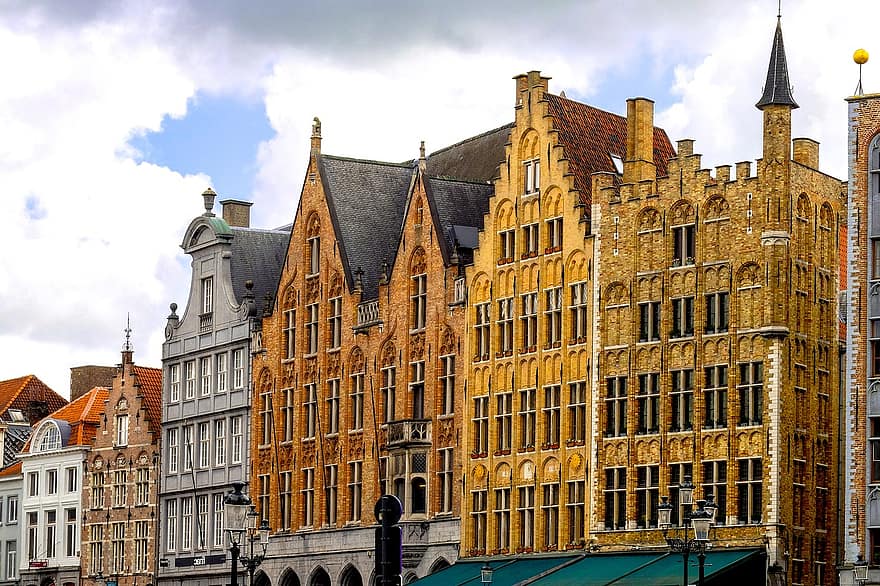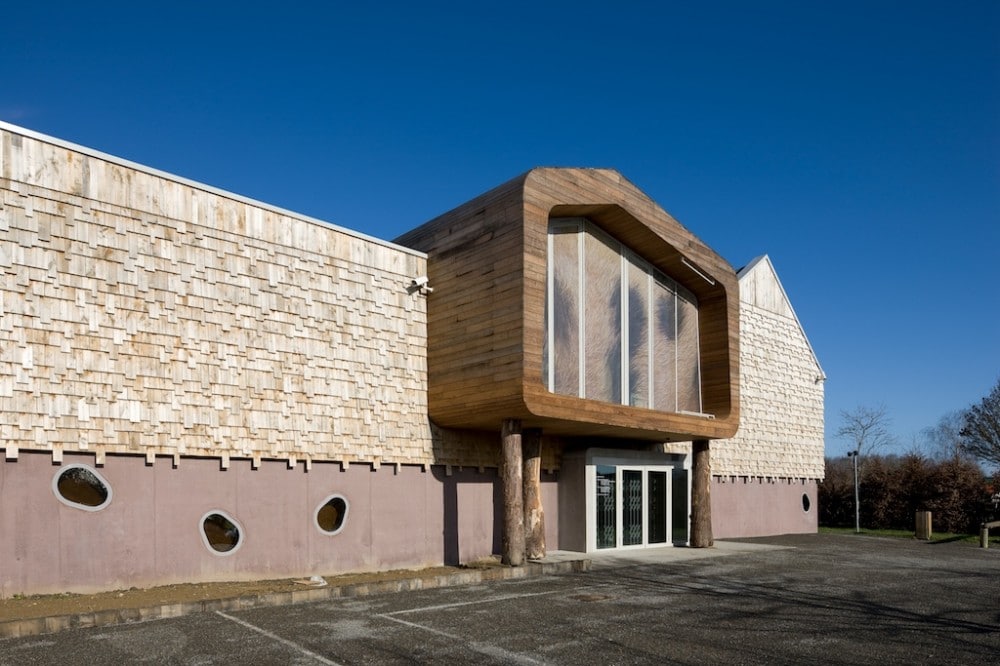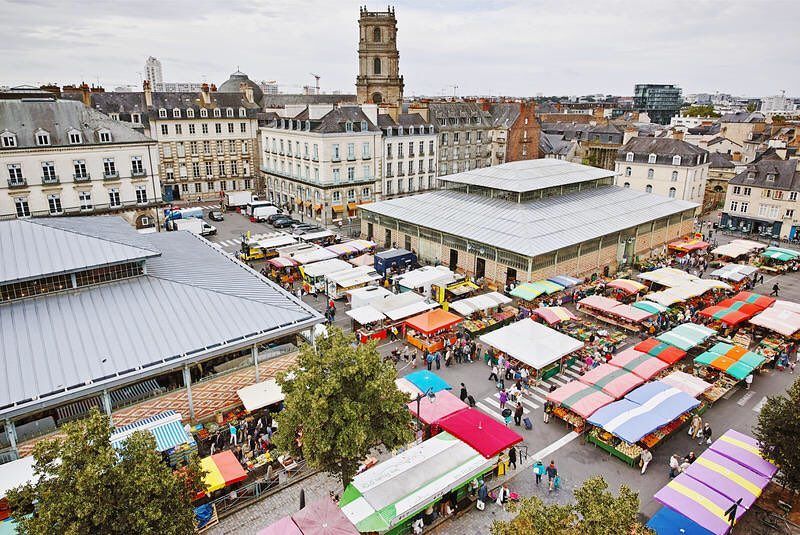What is Rennes Known For?
A crossing since the era of the ancient Romans, Brittany’s lively capital perches at the junction of highways connecting major northwestern French cities. It is a ravishingly set-out city with an expressive and majestic center and an astonishing medieval quarter that is a delight to be immersed in. At night, Rennes has no end of brisk spots to visit for a drink, while the range of chic restaurant selection is incredible.
Here Are A Few Things Rennes Is Famous For:
The Old Town of Rennes
The city of Rennes was almost entirely wiped out by a great fire in 1720. This is why you would find several dignified late 1700s houses when you visit. Around the cathedral, however, is a network of streets where half-timbered houses survived the raze. Rue du Chapitre and Rue de la Psalette have delightfully buckled houses that stay over the small cobblestone streets.
Pause for a while to adore the centuries-old carvings on their timbers. Hotel de Blossac is also on Rue du Chapitre. It dates to 1728 and one of the most exquisite neoclassical abodes built after the fire. Today they are private apartments; however, visitors can enter the courtyard in front to get a good view of this spectacular mansion.

Parc du Thabor
On Rennes’ highest hill is ten hectares of the most superb gardens you may ever see. Parc du Thabor is a marvel. If you need to be swayed, think about the rose gardens in summer, where over 2,000 varieties bloom yearly.
Until the French Revolution, the garden was in possession of the Abbey of Saint-Melaine, just outside the city walls. In the 1800s, it was tended by Eugène Bühler, the master gardener who added the English gardens and French parterre. It is no ordinary task to maintain the several flowerbeds in a park: in two five-week durations yearly, some 60,000 plants are replanted by the group of gardeners.
Palais du Parlement de Bretagne
After the unification of Brittany and France in 1532, the city’s influence soared almost suddenly, and it assumed the home of one of the country’s 17 regional administrations. This added repute and attracted the aristocracy, steeping Rennes with mansions and a courtly ambiance it now retains.
The construction of Palais du Parlement commenced in 1618 but wouldn’t be completed for another hundred years. In spite of the hit it took in 1994, the interior is well embellished: in the 1650s, the Grand’Chambre was unscathed and is a delectable hall with a paneled ceiling that was conveyed from workshops in Paris to the city by a timber raft.

Museum of Fine Arts of Rennes (Musée des Beaux-Arts)
Like a good number of French regional museums, the city’s Musée des Beaux-Arts opened after the French Revolution, with artworks confiscated from religious buildings and massive homes in the area. In the collections of the 1700s historian- Christophe-Paul de Robien- are some exquisite Egyptian, Roman, Etruscan, Greek artifacts that are all still on display today.
To the pleasure of art lovers, the galleries range from the 1200s to the present day with a focus on the 1600s baroque. Visitors can see pieces by Georges de la Tour, Rubens, and Maarten van Heemskerck, or rush to the late 1800s duly represented by Boudin, Sisley, and Gaugin. Then there is a catalog of works by history maestros like Albrecht Dürer, Donatello, Michelangelo, Leonardo da Vinci, and Rembrandt.
Écomusée du Pays de Rennes
On Rennes’ southern end is a well-maintained historic farm, showing 500 years of Breton agricultural heritage. There are arable crops, a kitchen garden, fruit orchards, beehives, and all the farmyard animals on the property.
The animals, like Bretobbe Pie Noir and Froment du Leon, are Breton bred. The farmhouse dates to the 16th-century, and it showcases set arranged across the three floors. The tour focuses on the development of farming in the area with tableaus, documentary films, historic machinery, and interactive games.

Parc des Gayeulles
Sprawling across a large part of northeastern Rennes, this garden is a great way of going all out into nature without having to go beyond the city’s N136 ring road. If you do not want to miss a workout while vising Rennes, you Parc des Gayelles is a solid option.
It is a hundred acres of woodland and green fields. You will find many facilities as well, like an indoor skating rink, campsites, a zoo with donkeys, cows, and horses, as well as five lakes, one of which has a bar-restaurant on the shore and pedal boats.
Les Champs Libres
This inventive cultural hub in the city center took thirteen years to be completed between 1993 and 2006. Christian Portzamparc designed it. The work blends the Museum of Brittany with Rennes’ new library and science center and will thrill any urban design enthusiast. It is exciting to see how the three elements contain one another and blend to make an exhibition on the ground floor.
Marché des Lices
Rennes has about 20 markets- a whopping number for a mid-sized city. Marché des Lices is the biggest, and it opens place on Saturday mornings. Since 1622, it has been a city institution and is the third-largest in France with 300 producers, artisans, and traders. If you have lined up a picnic for the weekend or staying at a holiday rental, you should shop for fresh ingredients at Marché des Lices. In Halles Martenot, there are about 40 butchers there and outside, you will find cheese sellers, bakers, and artisans preparing Breton specialties. This is also the perfect spot to get some incredible Breton snacks, like galette-saucisse.

Rennes Cathedral
Rennes’ cathedral, with its somber neoclassical frontal, is not the most stunning in the country; however, it has a captivating story to tell. Since the 500s, this has been the site of the city’s cathedral. However, the one built in the 12th-century collapsed gradually between 1490 and 1754. At that time, it was entirely demolished to be built all over again. The interior has beaming frescoes that appear to cover all the inches of the church, including the cylindrical vault in the nave. You should see the Grand Organ from 1874, which the iconic Aristide Cavaille-Coll built.
Opéra de Rennes
Rennes’ opera halls stand beautiful on Place de la Mairie, facing the city’s also remarkable 1700s baroque city hall. Tagged as a French ‘monument historique’, Opéra de Rennes is from 1836 with a hall painted in the early 1900s by the legendary painter Jean-Julian Lemordant. If you do not mind seeing a performance, it is worth planning ahead because the opera has close to maximum attendance.
Porte Mordelaise
In the 17th and 19th-centuries, the city walls were torn down in stages. Today you will still see compelling parts of the once imposing walls. The most captivating part, however, is the Porte Mordelaise, a 1400s gatehouse. The gate used to be the main entryway into Rennes and was where ceremonial procession starts. On top of the arch is the coat of arms of the Dukes of Montfort. They ruled Brittany from the mid-1300s to the turn of the 1500s.
Parc Oberthür
A private park leveled in the 1700s for François-Charles Parc Oberthür is another green sanctuary in the city center. François-Charles Oberthür is the founder of the Oberthür printing house. Parc Oberthür measures over 3 hectares, so it is staggering to think that it remained private until late 1960. There is woodland with cedars, sequoias, oaks, beech trees, and limes, and resplendently tended laws bordered by paths. You will also find a massive ornamental pond with turtles, ducks, and crap.
Musée de Bretagne
In the Champs Libres, Musée de Bretagne abridges the region’s thousands of years of human history. In 2016, it celebrated its 40th anniversary. As you will see, the archaeological collections are much older and were grown from a core of items collected by Christophe-Paul de Robien in the 18th-century. In the museum’s collection, there are over 300,000 objects with a whopping size of assorted coins that are close to 35,000. Another section in the museum is its interestingly varied; medieval manuscripts, an Iron Age statue, Nazi paratrooper bicycles, all helping visitors to understand the region’s rich past.
What is Rennes Famous For? – Summary
Rennes is the capital of the region of Brittany and is a true reflection of French splendor while it beams with its own distinct regional character. The city offers tourists a wealth of breathtaking architecture in its old town, from medieval and Renaissance mansions to stately classical structures. And while you meander through Rennes and its fascinating attractions, you will grasp the whole hype about the city.
